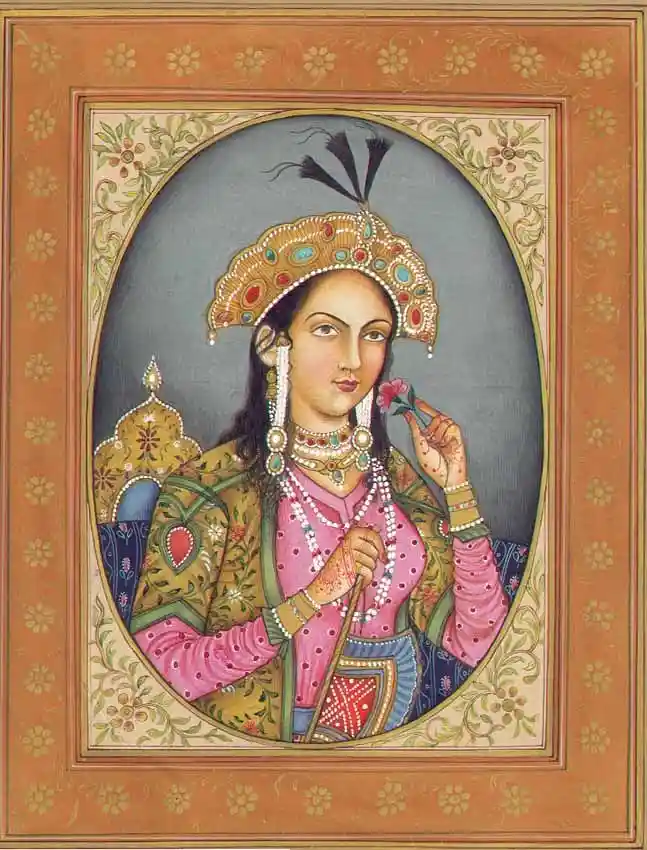The Journey From Arjumand Banu Begum to Mumtaz Mahal Begum
Immortalized through the love that resides in the Taj Mahal, Shah Jahan’s wife, Empress Mumtaz remains one of the most intriguing personalities of the Mughal history.

Mumtaz Mahal; Source: Wikipedia
Mumtaz Mahal, a Begum, a lover, a Mughal, but above all she too was a woman with an identity of her own. Her name reminds us of the beautiful marble structure, Taj Mahal which was built by Shah Jahan in his beloved’s memory. But who was she? A Powerful Begum and a beautiful wife, who was she above these descriptions? Let’s delve deep into the Mughal Era where we will meet the lady behind the Jharokha, Mumtaz Mahal.
A beautiful child was born on 27 April 1593 in the land of the Mughal Empire in Agra. “Congratulations, Asaf Sahab, Begum Diwanji has given birth to a beautiful girl”, informed the midwife with a bright smile on her face, while handing over the child to Asaf. “Arjumand Banu Begum. I’ll name her Arjumand Banu Begum”, said Asaf in a cheery voice. “Bhaijaan, she is very beautiful. Let me hold her in my arms”, said Nur Jahan, taking Arjumand in her arms. “I am her brother. I should get the chance of holding her in my arms, first”, chimed Shaista Khan spreading his arms.
Arjumand grew up to be a beautiful and intelligent girl. She was very curious about everything that happened around her. “Ammi, why does the pole star shine so brightly?”, asked an eight-year-old Arjumand. “The pole star shows the direction to the travellers. It guides them to their destination.”, explained her mother, to which Arjumand nodded understandingly.
Being an extremely talented and cultured lady, she often attracted the attention of the nobles in the court through her intelligence and smart mouth. She used to write poems in Arabic and Persian language which further increased her popularity among the Mughals. She was the perfect combination of modesty and honesty. Her nature of “calling a spade a spade”, made her stand out of the Mughal Begum crowd. Her warm and straightforward attitude did not overshadow her cheerful and easy-going personality.
“Asaf Sahab, Jahanpanah Jahangir has asked for your daughter’s hand in marriage for his son, Shehzaade Khurram.”, informed a royal messenger.
Soon, wedding shehnais were heard in Mughal Empire. People in the kingdom rejoiced at the news of the marriage. After the official engagement of Prince Khurram and Princess Arjumand on 30 April 1612, they were finally tied forever in the bond of marriage in 1617.

After ascending the throne, Prince Khurram was given the title of Shah Jahan. Bewitched by Arjumand’s beauty and brain, Shah Jahan gave her the title of ‘Mumtaz Mahal’ which means “The Exalted One Of The Palace”.
Mumtaz received the titles of Malika-i-Jahan, Malika-uz-Zamani, and Malika-i-Hindustan. Shah Jahan bestowed Mumtaz with all the luxuries that no other Empress had enjoyed before. She lived in Khas Mahal which was adorned with pure gold, precious stones and unique rose fountains. She was also given the highest allowance of One Million Rupees every year.
Even after receiving so much fortune, she was quite humble and down to earth. She often donated a huge amount of money to the poor and destitute. Mumtaz also patronized many poets, scholars and other talented people. She also designed the riverside garden in Agra, now known as Zahara Bagh.
As time passed, Mumtaz gave birth to thirteen children in nineteen years of their marriage. Even during her pregnancy, she travelled with Shah Jahan to all his military campaigns. She also supported him during his rebellion against his father. She was not just his wife, but his trusted confidant and a friend who had his back during his bad and good times. His trust in Mumtaz was so deep that she was also honoured with the imperial seal, the Mehr Uzaz, which validated imperial decrees.
But as they say that happy times don’t last long. Mumtaz Mahal took her last breath while giving birth to her fourteenth child due to a postpartum haemorrhage on 17 June 1631. She was initially buried at Burhanpur. Shah Jahan was badly broken after Mumtaz’s untimely death. He went for an entire year of mourning and when he came back, his condition was pathetic. But he soon recovered with the help of his daughter, Jahanara Begum.
Shah Jahan’s love for Mumtaz was so deep and irrevocable, that he transferred his wife’s body in a golden casket and brought it back to Agra. He then built one of the most beautiful structures in the history of Indian Architecture, the Taj Mahal for his beloved Mumtaz which took twenty-two years to complete.
Not only a Mughal Begum behind the Jharokha but a woman with wit and power that makes her one of the most awe-inspiring personalities of the Mughal Era. Now that we have come to an end to this beautiful story of Arjumand aka Mumtaz, we get to know that she was the perfect amalgamation of beauty and brain. When we watch her through the kaleidoscope of History, we see a woman with an unusual spark of her eyes and dreams which are as colourful as the rainbows in the sky.


